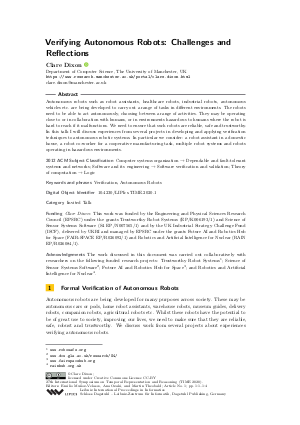LIPIcs.TIME.2020.1.pdf
- Filesize: 278 kB
- 4 pages

 Creative Commons Attribution 3.0 Unported license
Creative Commons Attribution 3.0 Unported license





















Feedback for Dagstuhl Publishing